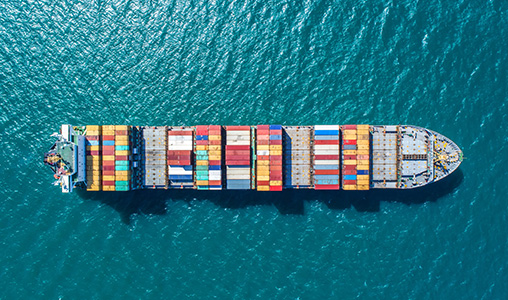After years of trade liberalisation that led to the establishment of the World Trade Organisation (WTO) in 1995, there has been a trend reversal in recent years. Recently, the topic of tariffs and protectionism1 has resurfaced as a central issue in global economic and political discussions, driven by increasing instability and rapid economic changes, prompting many nations to implement protectionist measures to protect their local industries.
The global economy is being fundamentally redefined by recent developments. The reintroduction of restrictive trade measures, such as tariffs and trade barriers, is forcing companies and the financial sector to adapt, with domino effects on international markets, geopolitical balances, and supply chain management. The impact on global supply chains, already strained by the pandemic, may prompt many European companies to rethink their strategies, prioritising reshoring or the diversification of suppliers. However, this process could result in higher operating costs and decreased overall efficiency.
TRADE STATISTICS ON THE MAIN ECONOMIES: EU, CHINA, AND USA
To assess the impact of these measures, here are some figures on trade exchanges between the key economies involved:
- EU, China and USA are the three largest global players in international trade2
- the most recent official data reveal that the EU's total trade (exports and imports) is approximately €5 trillion (excluding intra-EU trade), €417 billion lower than China, but €271 billion higher than the United States2
- accounting for 30% of world trade in goods and services and 43% of global GDP, the EU-US trade relationship is the most integrated globally, with trade exceeding €1.5 trillion (a figure that has more than doubled in the past 10 years)3
- the US imports 80% of its primary aluminium needs, 70% of which comes from Canada4

BALANCING TRADE POLICIES, BETWEEN OPENNESS AND PROTECTIONISM
Even with growing protectionist pressures, international trade continues to be a fundamental pillar of the global economy. As a result, many countries are seeking to strike a balance between the need to protect- their economies with the importance of maintaining open, cooperative trade relations.
For instance, the EU recently introduced the "Competitiveness Compass", a strategy designed to bolster Europe's strategic autonomy while still reaping the rewards of international trade.
THE FUTURE CHALLENGES FOR GLOBAL TRADE BETWEEN STABILITY AND SUSTAINABILITY
The future of global trade will hinge on governments' capacity to find a balance between safeguarding national economies and global cooperation. Although protectionism can provide short-term advantages, it poses a threat to long-term economic growth. To tackle the challenges of a more interconnected world, it will be crucial to create trade policies that encourage stability, innovation, and sustainability, while preventing a regression into excessive market fragmentation.
THE ROLE OF INTESA SANPAOLO IN SUPPORTING COMPANIES AND INVESTORS
In this dynamic and evolving landscape, Intesa Sanpaolo, through its IMI Corporate & Investment Banking Division, remains committed to supporting its clients, including companies and institutional investors, assisting them in driving their growth strategies and enhancing their competitiveness on the global stage.
1 While customs duties aim to make imported goods and services more expensive than domestic products, protectionism is a broader and more intricate economic approach that involves not only tariffs but also measures like import quotas, subsidies for local industries, and restrictive regulations on foreign companies.
2 "International trade in goods" – Eurostat, Data 2023, sourced in August and March 2024
3 EU-US trade 2023 – European Council
4 T-Commodity
Find out more in the Inbiz Magazine article dedicated to the Import-Export 2025 prospects, between tariffs and uncertainties.